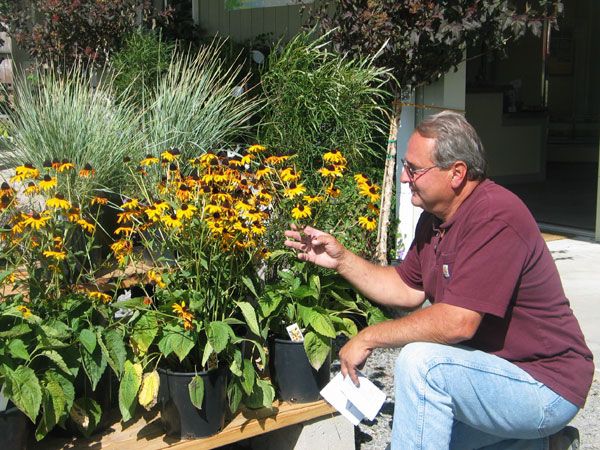Making an ornamental garden Deer-resistant
Published 3:48 pm Tuesday, September 7, 2010

- Making an ornamental garden Deer-resistant
SUMMERVILLE – Creating an ornamental garden that is resistant to the voracious appetites of Northeast Oregon deer is easy.
Almost as easy as trading tulips for daffodils.
Horticulturist Nick Nickens is adept at explaining why. Nickens did
so recently during a presentation on deer-resistant gardening at
Stargazer Perennials near Summerville. Planting a garden that deer will
stay completely away from is impossible since deer browse on almost
everything, Nickens said.
Still, creating a highly deer-resistant landscape without using fences and repellents is possible via smart gardening practices – intelligent gardening rooted in common sense.
“Don’t grow plants that you like. Grow the plants deer do not like,” Nickens said.
This sounds fundamental, but it can be deceptively hard. The temptation of plants in full bloom in stores is hard to resist. Too often gardeners succumb to their lure.
“Both the ‘impulse’ and ‘must have’ plants go into the ground and the next morning they are in the digestive tract of a deer,” Nickens said.
The heartbreak and frustration this causes can be avoided by purchasing alternative plants that often add equal beauty. Gardeners who fancy tulips, which deer devour, should consider buying daffodils instead. Deer often avoid daffodils, possibly because of their pungent odor. Nickens noted that daffodils are available in a number of colors besides yellow – a fact that is , unbeknownst to many.
Russian sage, large ornamental grasses, cone flowers and black-eyed Susans are among the many other ornamental garden plants deer tend to avoid. Blue spruce is one of the evergreen trees deer usually stay clear of. An extensive list of deer-resistant plants assembled by Nickens is available at www.stargazerperennials.com.
Gardeners seeking to keep deer away also would be wise to use slow-release organic fertilizers instead of the high-nitrate water-soluble varieties many people apply, Nickens said. The reason is high-nitrogen, water-soluble fertilizers are immediately absorbed by plants, causing a “flush of growth,” one that deer find succulent.
Plants nourished by organic fertilizer do not have the “flush of growth” deer find so tasty. Organic fertilizer does not trigger quick growth because it is released slowly. Nickens explained it must be broken down by microbial activity in the soil before it becomes available to plants.
Nickens also discourages people from using water-soluble fertilizer because it is salt based. Deer find salt irresistible.
“When you put out a salt lick you will have deer all the time,” Nickens said.
Gardeners using water-soluble fertilizer should place it in the ground and not on their plants. Doing the latter “salts the plant,” making it more desirable to deer.
Gardeners can also protect themselves by not making the mistake of putting plants in the approximately three-week period fawns are being born each spring. Does and their newborns converge on gardens during this time.
“Fawns come in sampling everything. They may not eat (ornamental garden plants) but they will taste them to death,” Nickens said.
The time fawns are born varies by region. Gardeners should find out when they are born in their locale and avoid planting during this time.
Fawns in late spring and early summer are being introduced to feeding areas their descendants often have been coming to for generations. Nickens said gardeners need to break deer of the tradition of coming to their yard.
“Deer are creatures of habit. You want to break that cycle,” said Nickens, who serves as a horticulturist at Stargazer Perennials.
Smart planting can help keep deer out of ornamental gardens, but not those with vegetables. Nickens said fencing is the only way to keep deer from vegetable gardens.
“Food is being raised and there is no food (in gardens) deer can resist,” he said.
People with vegetable gardens are encouraged to place 7-foot fencing around them. Six-foot fencing will deter some deer, but a 7-foot barrier will keep all deer out.
Nickens stresses that a barrier of deer-resistant plants will not shield an ornamental or vegetable garden from the plants deer like.
“This is a myth. People think that planting a circle of deer-resistant plants will protect the other plants. It will not,” Nickens said.
What is not a myth is that planting a deer-resident ornamental garden is relatively easy and will spare many gardeners in this region a high degree of frustration.









